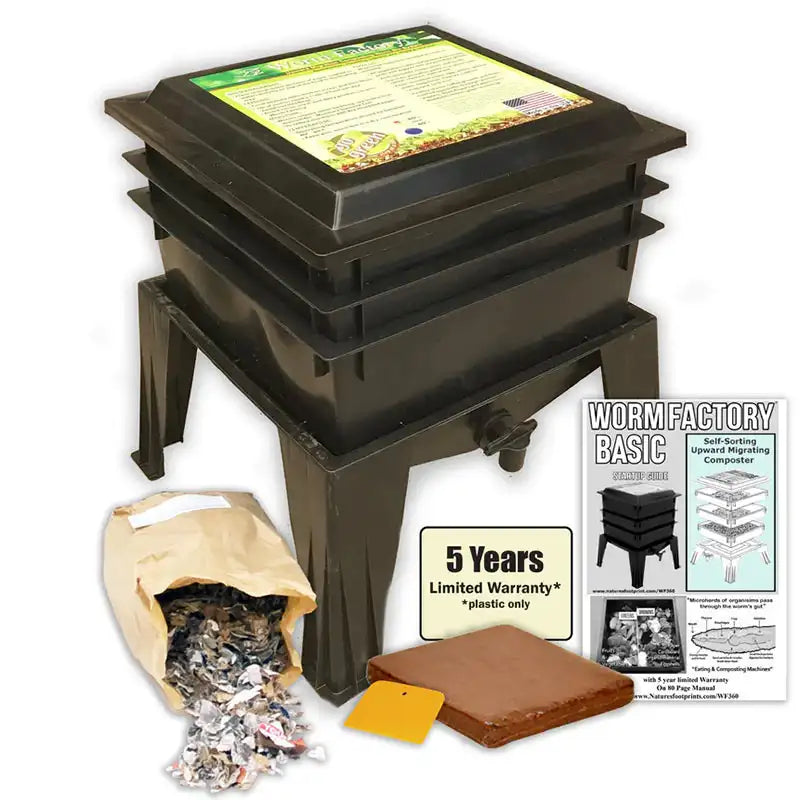Should You re-use old potting soil?
Q: Alison, "originally from Norman, Oklahoma, but currently surviving the furnace otherwise known as Austin, Texas" writes: "I've been wondering what to do with used potting soil from my indoor house plants. Every time I repot a houseplant (always with organic soil mixes), I can't stand to throw the old mix out, but I don't know what could be done with it to make it usable again."
"Adding it to a compost pile was my first idea, but the jury seems to be out on whether that's safe or could carry previous pathogens to the next plants. Is there an amount of composting time that would resolve the problem? Internet searches suggest boiling the soil to sterilize it, but that seems ridiculously impractical. Would spreading it in the yard or outdoor flower gardens be of any use?
"Any other ideas for how to reuse potting soil would be greatly appreciated! By the way, I've been listening to your show since I was a kid, when I had no choice because that's what my dad played on the car radio. But I've been a regular listener of my own free will for many years now! Thanks so much for all you share!"
A. Thank YOU for some great questions. (This is a subject I don't think I've discussed in depth in quite a while.) And thanks for the kudos, even though they confirm that I've been around long enough to become multi- generational. (I know that time marches on, but did it have to march right on top of me?)
Anyway, this is a universal question that all serious gardeners face. Back in my early days of gardening (when saber toothed tigers roamed the earth and there wasn't a lot of organic growing advice available), I chose to mostly mix the spent soil into my compost piles, hoping the mix would naturally cause the finished compost to be lighter and provide better drainage, especially thanks to the perlite.
As to bad little disease spreaders, a hot compost pile would cook out any pathogens in the soil and kill weed seeds too. But that's a HOT compost pile, not a cold one—both of which we will discuss in depth over the next couple of weeks.
And in all my decades of doing this, I have never heard of using boiling water to suppress plant disease. I have seen suggestions to use boiling water to kill weeds, which would not work AND would expose the person pouring to the possibility (make that probability) of serious burns, especially from sloshing. The only place for boiling water in the garden is in a mug containing a tea bag.
If a diseased plant grew in the container, trash the plant and compost the soil. I would not add potential disease organisms to my garden. If the plants that grew in that container were tomatoes AND those plants showed signs of disease, you could segregate that soil and only use it on garden beds in which you are NOT growing tomatoes, potatoes or eggplant.
If you have a bed that can go fallow for the season, empty all your suspicious soil on top, then solarize that bed. Solarization details: Pull out any tall plants, spread the potting soil on top, level the bed as precisely as possible and then saturate that soil with water, aiming to end up with a bed that literally cannot hold any more water. I'm not talking about 'watering' the bed; I'm talking about drowning it.
Then cover the bed tightly with CLEAR plastic, not black. (You want the sun to get through the clear plastic and really cook the bed, not just heat it up a little.) The plastic should be one or two mil thick. Pull it really tight over the soil and then use bricks or rocks to hold the plastic in place. (Make sure the plastic over-covers the area and use more weights than you think you should.) Leave the plastic in place all season long, starting early in the Spring and removing it only when it's time to plant fall crops. Do NOT rush: time equals success.
Otherwise, I empty all my old container soil into five-gallon buckets that I store inside for the winter. Come Spring I empty them all into a wheelbarrow, add lots of perlite and finished compost, mix it heartily and then refill the pots. (You can wash the pots out if you want, but I never have. And no matter WHAT, NEVER use bleach. It's a World War One trench gas, not a garden tool. If you have to do something, use vinegar and rinse the containers well with water afterwards.
The advice to {quote} ‘sterilize’ your containers and seed starting supplies with bleach makes about as much sense as dropping a pot of boiling water on your feet.
And PLEASE use a lot of discretion and doubt when researching things on the Internet, especially if it involves taking advice from other gardeners—and ignore non-organic information from Extension offices and Universities. Always remember that land grant Universities were created to promote the use of chemical fertilizers and toxic pesticides. Some have come a long way recently, but some are still stuck back in the age of DDT.
"Adding it to a compost pile was my first idea, but the jury seems to be out on whether that's safe or could carry previous pathogens to the next plants. Is there an amount of composting time that would resolve the problem? Internet searches suggest boiling the soil to sterilize it, but that seems ridiculously impractical. Would spreading it in the yard or outdoor flower gardens be of any use?
"Any other ideas for how to reuse potting soil would be greatly appreciated! By the way, I've been listening to your show since I was a kid, when I had no choice because that's what my dad played on the car radio. But I've been a regular listener of my own free will for many years now! Thanks so much for all you share!"
A. Thank YOU for some great questions. (This is a subject I don't think I've discussed in depth in quite a while.) And thanks for the kudos, even though they confirm that I've been around long enough to become multi- generational. (I know that time marches on, but did it have to march right on top of me?)
Anyway, this is a universal question that all serious gardeners face. Back in my early days of gardening (when saber toothed tigers roamed the earth and there wasn't a lot of organic growing advice available), I chose to mostly mix the spent soil into my compost piles, hoping the mix would naturally cause the finished compost to be lighter and provide better drainage, especially thanks to the perlite.
As to bad little disease spreaders, a hot compost pile would cook out any pathogens in the soil and kill weed seeds too. But that's a HOT compost pile, not a cold one—both of which we will discuss in depth over the next couple of weeks.
And in all my decades of doing this, I have never heard of using boiling water to suppress plant disease. I have seen suggestions to use boiling water to kill weeds, which would not work AND would expose the person pouring to the possibility (make that probability) of serious burns, especially from sloshing. The only place for boiling water in the garden is in a mug containing a tea bag.
If a diseased plant grew in the container, trash the plant and compost the soil. I would not add potential disease organisms to my garden. If the plants that grew in that container were tomatoes AND those plants showed signs of disease, you could segregate that soil and only use it on garden beds in which you are NOT growing tomatoes, potatoes or eggplant.
If you have a bed that can go fallow for the season, empty all your suspicious soil on top, then solarize that bed. Solarization details: Pull out any tall plants, spread the potting soil on top, level the bed as precisely as possible and then saturate that soil with water, aiming to end up with a bed that literally cannot hold any more water. I'm not talking about 'watering' the bed; I'm talking about drowning it.
Then cover the bed tightly with CLEAR plastic, not black. (You want the sun to get through the clear plastic and really cook the bed, not just heat it up a little.) The plastic should be one or two mil thick. Pull it really tight over the soil and then use bricks or rocks to hold the plastic in place. (Make sure the plastic over-covers the area and use more weights than you think you should.) Leave the plastic in place all season long, starting early in the Spring and removing it only when it's time to plant fall crops. Do NOT rush: time equals success.
Otherwise, I empty all my old container soil into five-gallon buckets that I store inside for the winter. Come Spring I empty them all into a wheelbarrow, add lots of perlite and finished compost, mix it heartily and then refill the pots. (You can wash the pots out if you want, but I never have. And no matter WHAT, NEVER use bleach. It's a World War One trench gas, not a garden tool. If you have to do something, use vinegar and rinse the containers well with water afterwards.
The advice to {quote} ‘sterilize’ your containers and seed starting supplies with bleach makes about as much sense as dropping a pot of boiling water on your feet.
And PLEASE use a lot of discretion and doubt when researching things on the Internet, especially if it involves taking advice from other gardeners—and ignore non-organic information from Extension offices and Universities. Always remember that land grant Universities were created to promote the use of chemical fertilizers and toxic pesticides. Some have come a long way recently, but some are still stuck back in the age of DDT.


